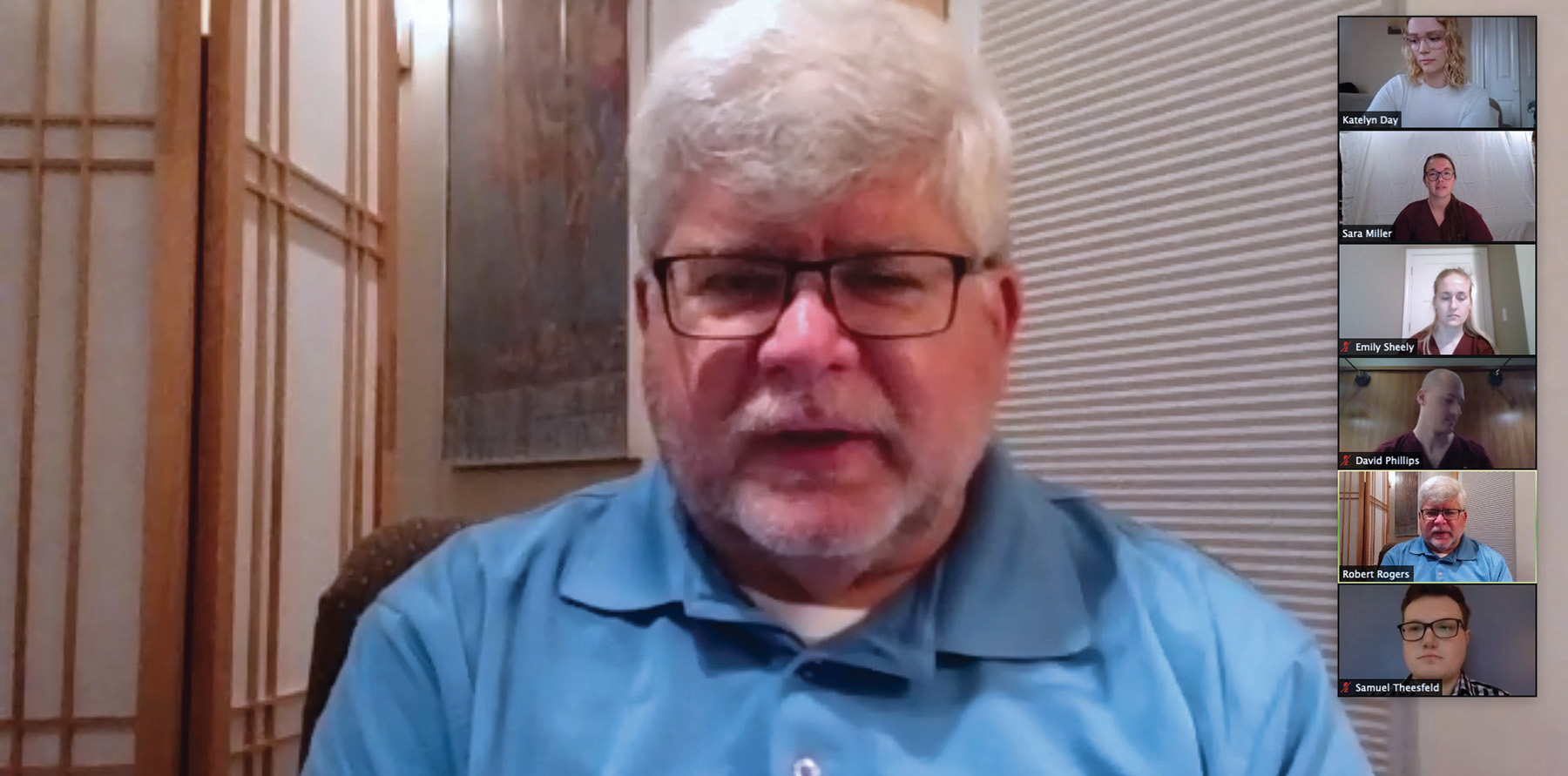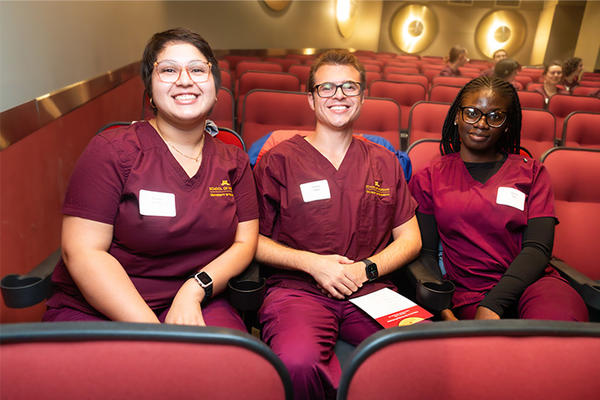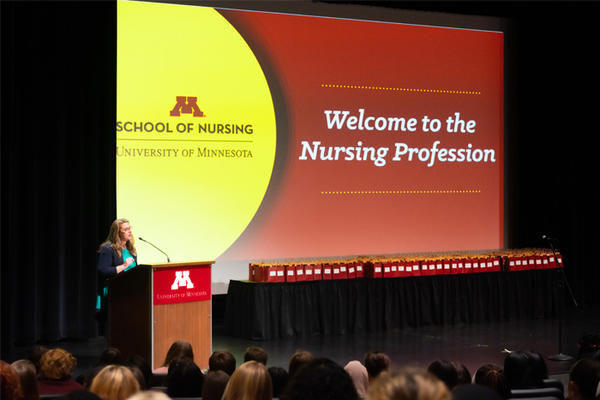Virtual visits provide real-time learning
April 13, 2020

As Katelyn Day prepared for her visit with a diabetic patient with concerns about a foot ulcer, she reviewed his discharge papers from a recent hospital visit and best practices for wound care for non-healing foot ulcers. She also had to check her computer’s settings and Zoom configuration to ensure she could see and hear the patient.
Day is a student in the School of Nursing Master of Nursing program, and the patient in this situation was a standardized patient – an actor with a scripted medical and social story.
When the University of Minnesota shifted its learning online due to the COVID-19 pandemic, the School of Nursing converted its courses to an online format, including simulation learning. Simulations are critical in the development of health care professionals, as they give students a chance to utilize their skills and knowledge in practice settings, according to Cynthia Bradley, PhD, RN, CNE, CHSE, director of simulation in the School of Nursing.
“When students are able to return to the clinical settings, they will be ready to transfer this knowledge and understanding to live patient care,” said Bradley.
Faculty, in partnership with the University’s M Simulation team, converted student learning experiences with standardized patients into telehealth visits and other alternative virtual activities. These modifications enabled distant learning and also introduced students to a type of visit that’s becoming more crucial in the midst of the pandemic, where stay-at-home orders mean minimizing face-to-face visits.
“I've been reading a lot about telehealth because of COVID-19, so it was really valuable to try it, given the current state of the world,” said Day. “It's very relevant, and now that I've done it, I feel like it could be a really viable option for many patients who can't get to a clinic or hospital for one reason or another.”
The simulation experience included a pre-brief, where students learned about the standardized patient’s reason for visit. Students were assigned to a group, with five students observing the patient visit and two students interacting with the patient. As one of the students interacting with the standardized patient, Day had the opportunity to practice her interviewing and assessment skills. They discussed how to reduce the risk for infection and she provided patient education on how to control his blood sugar level. After the 15-minute patient visit, students debriefed about the experience with an instructor.
“It’s really valuable to have experiences with patients and, right now, since we’re not getting those, being able to work with a standardized patient is very important to be able to practice our skills and learn from them,” said Day.
While students focused on the patient interaction, behind the scenes M Simulation staff assigned students to groups, moving them virtually to different breakout rooms and addressing technology issues as they came up. In total, more than 40 students participated in the 4-hour simulation.
Bradley, who presented on a National League for Nursing panel recently about fostering clinical reasoning in virtual environments, points to the landmark National Council of State Boards of Nursing Simulation Study that demonstrated that up to 50% of prelicensure clinical hours can be replaced with simulation with similar or better learning outcomes. “Because of the current pandemic, nursing programs have no alternate method for providing clinical experiences for students,” said Bradley. “The simulation research evidence shows that because the post-simulation debriefing is where the most significant learning happens, we are ensuring that faculty engage students in a debriefing dialogue after their virtual encounter to help students make connections and understand their own thinking about the patient scenario.”


